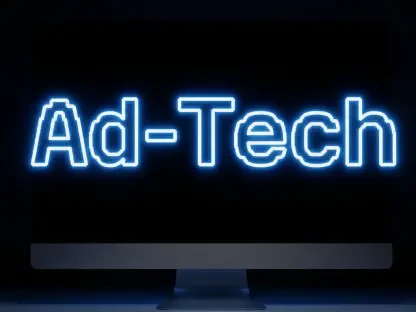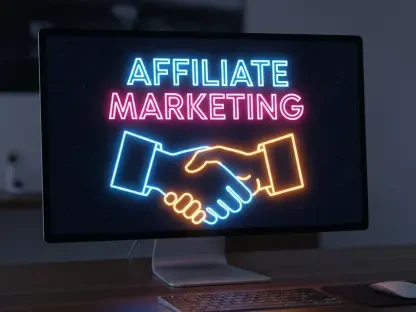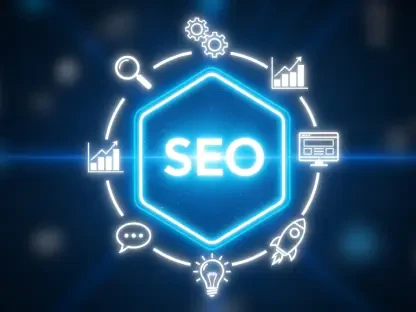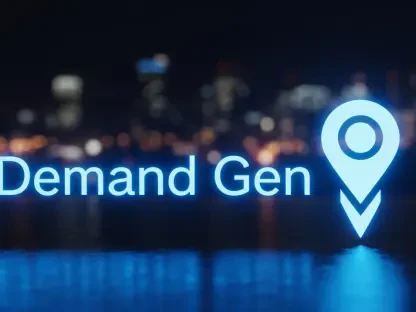Artificial intelligence is redefining the landscape of Google Ads, ushering in an era where enhanced efficiency and elevated success are not just aspirations but achievable outcomes. This technological shift is making the advertising ecosystem increasingly competitive and rewarding for those who adeptly utilize these AI-driven tools. Advertisers are now required to profoundly understand key areas influenced by AI to navigate this new era with strategic precision, and the benefits of these changes are already becoming evident.
The Rise of AI in Smart Bidding
Optimizing Ad Spend with Smart Bidding
The introduction of AI into Smart Bidding has transformed how advertisers strategize on Google Ads, offering advanced methodologies such as Maximize Conversions, Target CPA, and Value-Based Bidding. AI emphasizes a transition from simple keyword targeting to a deeper understanding of customer journeys, achieved through integrating comprehensive data from Customer Relationship Management systems. This seamless connectivity enables Google’s AI to create bidding strategies significantly enhancing ad spend optimization. As advertisers harness AI’s capabilities, they can more accurately predict and respond to consumer paths, effectively optimizing their investments in digital advertising campaigns.
Ensuring Comprehensive CRM Integration
While e-commerce platforms often feature smooth data integration facilitating optimal AI performance, lead generation websites frequently encounter challenges in providing complete CRM visibility to Google, including key conversion values. Such gaps can impede advertisers’ ability to leverage Smart Bidding’s full potential. To maximize the benefits of AI, it is paramount to ensure that all CRM goals and their respective values are visible to Google Ads. In turn, advertisers can replicate and engage customers along high-value journeys, improving targeting and fostering long-term efficacy. Bridging this integration gap secures a position at the forefront of strategic advancements and ensures competitive participation in AI-driven marketing.
Transitioning to Intent-Based Targeting
Broad vs. Exact Keyword Matching
The evolution of AI has shifted the paradigm from relying solely on exact keyword matches to embracing intent-based targeting, enabling a broader and more adaptable reach in advertising strategies. Rising costs and scalability limitations have propelled advertisers toward adopting user signal-driven approaches, reflecting browsing history and engagement patterns. This transformative shift increases the likelihood of accurately reaching target audiences by contextualizing ads within users’ broader online activities. Broad match keywords, enhanced by value-based bidding, offer a cost-effective and performance-boosting solution, encouraging advertisers to fine-tune their campaigns accordingly. This reveals significant improvements in ad engagement and conversion rates.
Managing Relevance through Negative Keywords
Despite the advantages of broad match strategies and AI-driven intent signals, maintaining advertising relevance requires careful management of negative keyword lists. These lists are crucial in ensuring advertisements remain targeted and cost-effective by preventing ads from appearing for irrelevant searches. Advertisers must balance the breadth of their reach with precision to mitigate inefficiencies and maximize campaign outcomes. By refining negative keyword strategies, businesses can optimize reach without losing specificity, achieving a harmonious balance necessary for robust and impactful advertising endeavors. The strategic use of negative keywords facilitates better alignment with practical business goals, solidifying the potential for achieving desired advertising results.
Elevating Performance with A/B Testing and CRO
Eradicating User Journey Friction
In an increasingly competitive advertising landscape with escalating click costs, minimizing friction in the user journey has never been more crucial. Continuous A/B testing emerges as an indispensable approach to identifying optimal page designs and user flows. Tools like Google’s Campaign Experiments and platforms such as Unbounce are instrumental in facilitating these tests, especially within mobile-first environments where space and efficiency are limited. Proactive engagement in testing can markedly improve conversion rates by refining user interactions and elevating overall engagement quality. Through meticulous experimentation and strategic adjustments, advertisers can ensure they deliver seamless and impactful experiences that resonate with audiences, leading to enhanced conversion opportunities.
Refining Ad Copy and Creative Assets
To bolster Click-Through Rates and subsequently improve Quality Scores and Ad Ranks, relentless optimization of ad copy, layouts, and creative assets is imperative. Elevated CTR results in reduced Cost per Clicks and better ad placements, shaping successful campaign performances. Testing diverse variations while maintaining coherent thematic ad groups becomes necessary to sustain campaign effectiveness. Advertisers are encouraged to creatively experiment with ad components, refining them iteratively to discover the most compelling combinations. The growing importance of creative experimentation underscores a deep transformation within advertising practices, prioritizing innovation and yielding enhanced audience engagement and retention.
Google’s Broader Evolution in Ad Offerings
Minimizing Advertiser Input with New Campaigns
Google’s recent innovations, including Local Services Ads and Performance Max campaigns, exemplify a strategic shift towards limiting detailed advertiser input while maximizing system optimization. This evolution relinquishes granular campaign controls, empowering advertisers to concentrate on broader strategic oversight. Such new offerings streamline administrative demands, reshaping how businesses interact with advertising platforms and signaling a future-oriented approach in ad management. By embracing these advancements, advertisers can allocate more energy toward identifying innovative strategies and driving their vision while entrusting AI with the intricacies of executing their campaigns, leading to more efficient resource management and a refined focus on long-term objectives.
Redefining the Role of Campaign Managers
Artificial intelligence is revolutionizing the landscape of Google Ads, marking the beginning of an era where increased efficiency and greater success are not just distant goals but tangible achievements. This shift is transforming the advertising ecosystem into one that is both more competitive and more rewarding for those who can skillfully harness AI-driven tools. For advertisers, understanding the key areas influenced by AI is crucial to navigating this new era with strategic accuracy. This technological advancement makes it imperative for advertisers to keep up-to-date with the tools and methods that can offer a competitive edge. As the digital environment evolves, AI is playing a pivotal role in shaping not only the methods of advertising but also the metrics of success. The changes ushered in by AI are already starting to show clear benefits, making it an essential aspect for businesses to incorporate into their advertising strategies. By doing so, they can achieve improved results and maintain their competitive stature in the industry.









